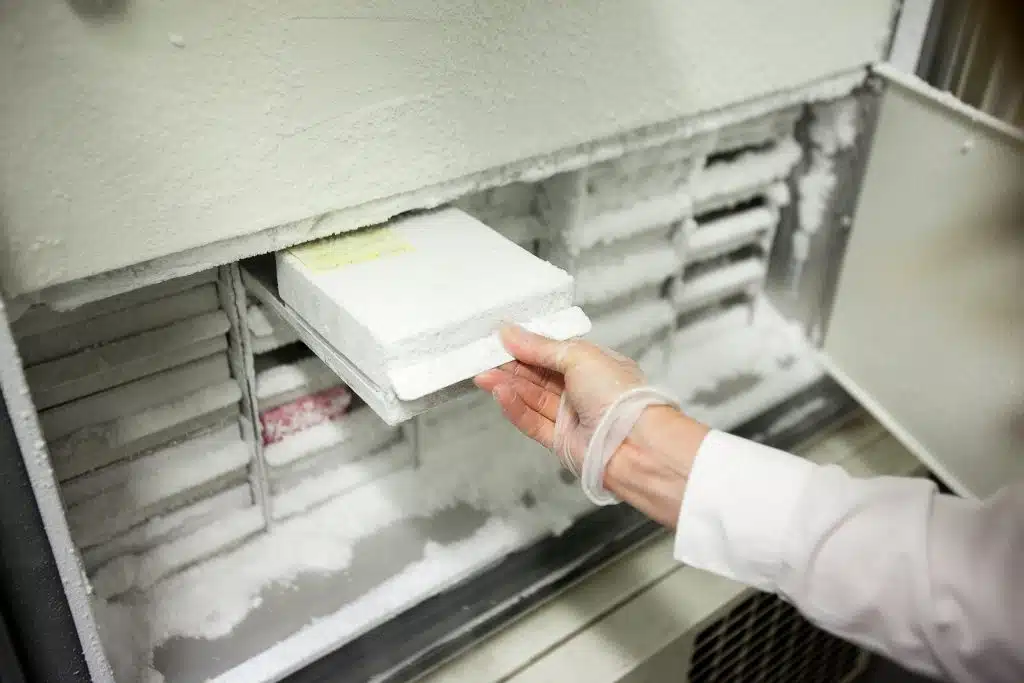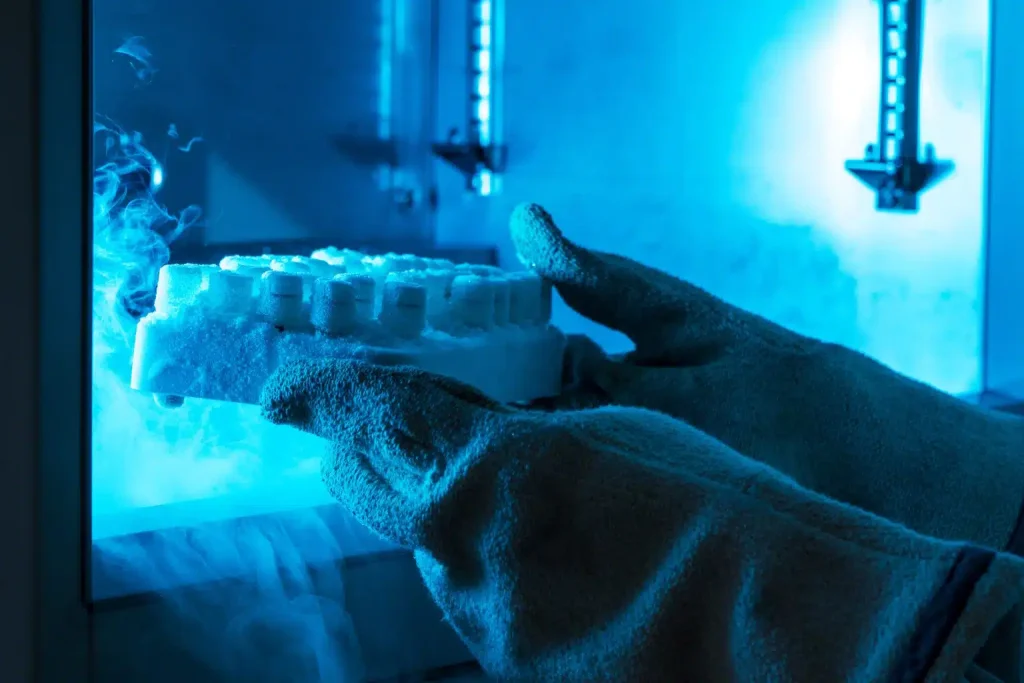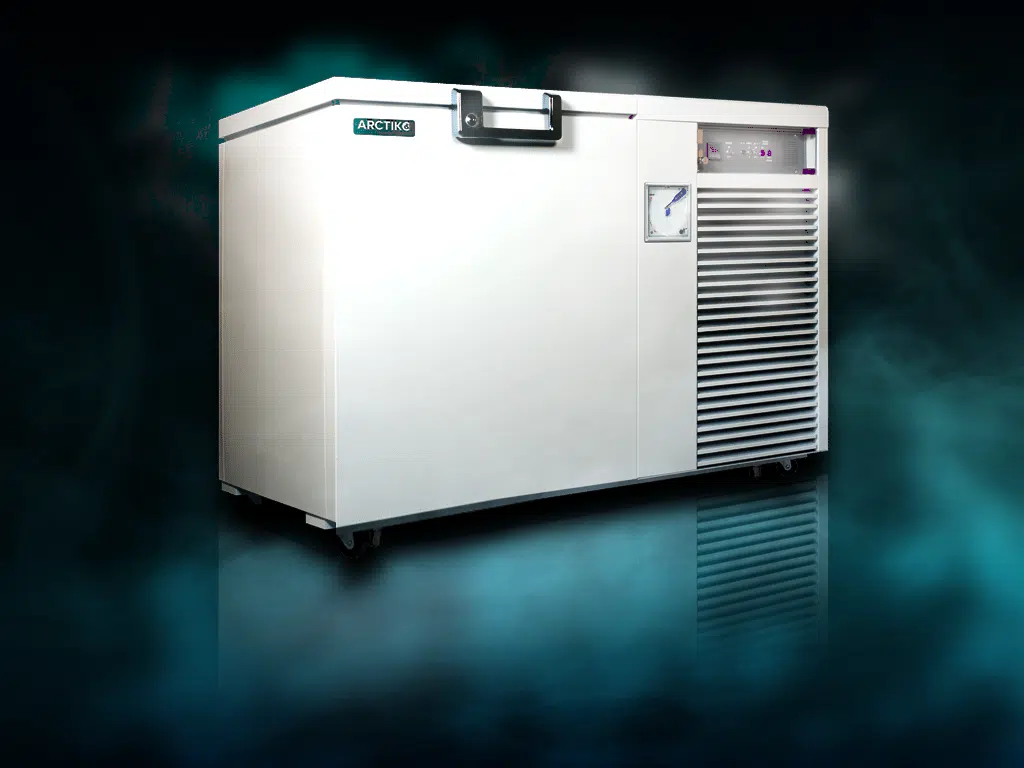Introduction
Cryogenic freezers play a critical role in preserving biological samples and other valuable assets in various fields, including scientific research, healthcare, and biotechnology.
Traditional liquid nitrogen (LN2) systems have been widely used for decades, but technological advancements have led to the emergence of mechanical cryogenic freezers, such as the CRYO 230 from ARCTIKO, as a safer and more cost-effective alternative.
In this article, we will explore the advantages of mechanical cryogenic freezers over earlier LN2 systems, including their safety and cost benefits, as well as addressing the issue of exploding Thermos flasks in the past.
Safety Advantages
Safety is a top priority in any laboratory or facility, and mechanical cryogenic freezers offer several key safety advantages over traditional LN2 systems.
Elimination of LN2 Hazards
LN2 is an extremely cold and volatile substance that can pose significant risks, including frostbite, asphyxiation, and explosions due to pressure build-up.
Thermos flasks have been known to explode in the past when exposed to LN2, causing damage to both equipment and samples.
Mechanical cryogenic freezers, on the other hand, use electric refrigeration systems that eliminate the need for LN2 and ensure a safer working environment.
Reduced Risk of Cross-Contamination
Traditional LN2 systems use open tanks to store samples, which allows for cross-contamination due to shared vapour space.
Mechanical cryogenic freezers, such as the CRYO 230 from ARCTIKO, use individually sealed compartments, to reduce the risk of cross-contamination and to ensure sample integrity.

Enhanced Sample Security
Mechanical cryogenic freezers also offer advanced features, such as digital temperature controls, alarms, and backup power options, that help maintain stable and uniform sample storage conditions.
These characteristics improve sample security and lower the chance of sample loss or deterioration due to temperature fluctuations or equipment malfunction.
Cost Benefits
In addition to improved safety, mechanical cryogenic freezers also offer cost benefits over older LN2 systems.
Lower Operating Costs
LN2 is a consumable resource that needs to be regularly replenished, resulting in ongoing operational costs.
On the other hand, mechanical cryogenic freezers operate using electricity, which is often more affordable and accessible than LN2.
This can lead to considerable cost savings over the course of the freezer’s life.

Reduced Maintenance Expenses
Traditional LN2 systems require regular maintenance, including monitoring and refilling of LN2, as well as the associated equipment and safety inspections.
Electric cryogenic freezers have lower maintenance requirements, fewer consumables, and follow simpler maintenance procedures, reducing maintenance expenses and downtime.
Long-Term Cost Efficiency
Mechanical cryogenic freezers are designed for long-term use, with durable components and efficient insulation that can help minimise energy consumption and reduce operating costs over the life of the freezer.
Additionally, Mechanical cryogenic freezers often come with extended warranty options, providing added cost protection and peace of mind.

Conclusion
In conclusion, Mechanical cryogenic freezers, such as the ARCTIKO’s CRYO 230, are a safer and more cost-effective solution when compared to older LN2 systems.
Their improved safety features, reduced operating costs, and enhanced sample security make them a valuable investment for laboratories and facilities seeking to prioritise safety, efficiency, and cost-effectiveness in their cryogenic storage needs.
By choosing Mechanical cryogenic freezers, researchers, healthcare professionals and biotechnologists can ensure the preservation and security of their valuable samples while minimising risks and maximising cost savings.

 Fast Delivery
Fast Delivery  Global Compliance
Global Compliance  Long Term Support
Long Term Support